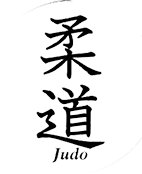Hi Noboru
It’s believed that bowing in Japan started sometime during the Asuka and Nara periods (538-794 AD) with the introduction of Chinese buddhism. According to those teachings, bowing was a direct reflection of status—if you met a person of higher social standing, you would put yourself in the more “vulnerable” position of a bow, much like a friendly dog rolling over on its back, to prove that you didn’t harbor any ill will toward them.
I don't want to talk down the influence of Buddhism on japanese culture BUT bowing and all forms of bowing and the reasons why to bow in this way and why not, all originated from Confucianism. Respect, proper etiquette and rite is very central in Confucianism. Confucianism was introduced to Japan at the same time as Buddhism and a buddhist bow (more like praying or worshiping) is different to the many forms of formal bows we see in Japan (as bowing in your linked website)
Values in Confucianism:
- Five Constants (Rén 仁 humaneness) Yì (義 righteousness) Lǐ (禮 proper rite) Zhì (智 knowledge) Xìn (信 integrity)
- Four Virtues (Zhōng 忠, loyalty); Xiào (孝, filial piety); Jié (節, continency); Yì (義, righteousness)
- Five Great Relationships : ruler to ruled, father to son, husband to wife, elder brother to younger brother, friend to friend
and some more like
chéng (誠, honesty)
shù (恕, kindness and forgiveness)
lián (廉, honesty and cleanness)
chǐ (恥, shame, judge and sense of right and wrong)
yǒng (勇, bravery)
wēn (溫, kind and gentle)
liáng (良, good, kindhearted)
gōng (恭, respectful, reverent)
jiǎn (儉, frugal)
ràng (讓, modestly, self-effacing)
Bowing - in a proper way and in different forms - is not only a greeting; it's an expression of all above.
The Analects (Edited Conversations) - teachings of Confucius:
http://www.acmuller.net/con-dao/analects.html



